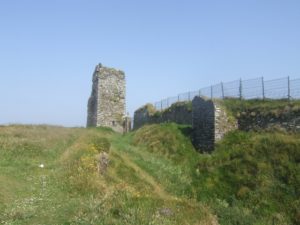Women in Aviation – A Crucial Part of our History
Althouyght women have been flying for decades, historically they were often relegated to working behind the scenes in the field of aviation.
Women in Aviation – A Crucial Part of our History
With years of perseverance, women have shown that flying is not just a man’s game and, while it’s not for everyone, it should not be a choice made based on gender.
First Pilots in Historical Records
The first female pilot on record is Élisabeth Thible. She flew a hot air balloon in France in 1784, and she has been followed by numerous, renowned balloonists who still hold records today.
We all know about the Wright brothers, who flew the first motorized aircraft in 1903. But are you familiar with their sister, Katherine? She was instrumental in helping them design and fly the first motorized airplane. Although she didn’t fly with Orville and Wilbur until a few years after their first flight, she was heavily involved in the planning and funding of the flight. She unknowingly helped lay the groundwork for more women to make their mark in aviation.
Pilots Licenses for Women
The 1910s saw an onslaught of women earning pilots licenses around the world. Raymonde de Laroche is credited as the first licensed, female pilot in 1910, followed by Harriet Quimby in the United States in 1911. Quimby is also the first woman to fly across the English Channel, a feat for performed in 1912.
Not everyone can have a well-planned first flight; Blanche Scott is documented as having an accidental flight in 1910 that earned her the title of first female airplane pilot in America. However, her flight is often discredited because it was a gust of wind that launched her plane, and not its engine. Still, it’s quite an accomplishment for Scott!
Aviation in the 1900s
With women earning their pilots licenses, the 1900s and 1920s were a time of continued growth for female flyers.
1910 – The first flying school in England was run by Hilda Hewlett and Gustave Blondeau.
1918 – Katherine Stinson worked as the first female airmail pilot for the USPS. The first airmail flight was made in 1911, changing the way we communicate with one another forever.
1920s – Following the war, both men and women pilots took advantage of surplus aircraft for sale to the public. Without work to do for a war effort, pilots found themselves offering rides to civilians and performing for crowds. This paved the way for aerial stunts to become part of traveling circus acts.
1921 – Bessie Coleman was the first american woman of color (African American and Native American) to get a pilot’s license.
1927 – Phoebe Fairgrave became the first stuntwoman to earn both a transport pilot license and a mechanics license as a woman.
1929 – Elsie MacGill was the first woman to get a Master’s Degree in aeronautical engineering, which she earned at the University of Michigan. She was nicknamed “The Queen of the Hurricanes” and worked as an aeronautical engineer and an aircraft designer.
1929 – the Ninety-Nines was formed, which served as an international group of female pilots. This organization has grown to include 155 chapters (as of 2018), offering networking opportuntiese, flight scholarships, and mentoring programs for women in aviation. Original charter members included Amelia Earhart, Phoebe Omlie, and many other talented pilots of the time.
Aviation During the 1930s
In 1930, there were 200 female pilots on record in the United States. Even during the Great Depression of the 1930s, female pilots made progress and set records. Amy Johnson was the first female pilot to navitage from England to Australia in a plane, and Amelia Earhart was the first female pilot to make a solo, transatlantic flight in an airplane.
Thanks to a few institutisions, including Purdue University where Earhart was an instructor, women were able to attend flight school in the US in the 1930s. Thankfully, today there are many more options when it comes to women accessing flight training.
1936 – Hanna reitsch became one of the first pilots (male or female) to fly a helicopter, and she was the first woman to earn a helicopter license in 1938.
1939 – 110 women formed the South African Women’s Aviation Association, which grew to 4000 members over the next decade. When World War II broke out in the 1940s, the organization became known as the South African Air Force.
Aviation During the 1940s
During World War II, women were finally allowed to engage in combat. They not only participated in the war effort, but trained male pilots as well. Women also worked as air traffic controllers, scientists, engineers, and analysts during the war, giving them a front-row seat rather than one on the sidelines as in wars past.
Making Waves in the 1950s
The Korean War served as another opportunity for female pilots to make their mark. The North Korean Air Force was known as the only one in the entire world with female fighter pilots. Also during this time, the former ban on female mechanics in the Women Accepted for Volunteer Emergency Service (WAVES) was lifted, so women were able to serve in this capacity.
Limited Roles for Women in Aviation
Women in aviation saw their roles shift again in the 1960s. With no war effort to support, there were less opportunities for women to work as pilots. Instead, women were encouraged to find a career as a flight attendant until they decided to marry and leave the workforce.
Fortunately, not all women who wanted to fly had to choose between being a passenger or being a flight attendant; many female pilots persevered and took to the skies in the cockpit, with Jacqueline Cochran becoming the first woman to fly across the Atlantic in a jet plane (she also broke the sound barrier in 1953, a first for women).
During the 1960s, a setback for women in the space program was the lack of availability for women to earn Engineering degrees and attend military jet piloting programs. Without that experience under their proverbial belts, women could pass the physicals, but not the educational requirements established by NASA. Although this stalled progress for US women in space, Valentina Tereshkova from Russia was able to enter orbit in 1963, and earn the title of the first woman in space.
Women in the Military
In the 1970s, women finally saw a breakthrough in the Air Force and Navy; they were alowed to fly in these divisions of the military, giving the experience required for them to enter careers in commercial aviation.
1971 – Louise Sacchi flew a single-engine plane from new York to London in record time, completing the flight in just over 17 hours. This speed record still stands today.
1972 – Carol Rymer Davis decided that working in radiology and nuclear medicine wasn’t enough of a challenge for her, so she began piloting hot air balloons. She often placed in National and World hot air balloon championships, and set consecutive world records for altitude and duration throughout the 1970s and 80s. Rymer Davis enjoyed decades of balloon flying and, after her 2010 death in a balloon crash in the Adriatic Sea, she was inducted posthumously into the Colorado Aviation Hall of Fame and the United States Balooning Hall of Fame in Iowa.
1973 – Bonnie Tiburzi became the first female pilot for American Airlines.
1977 – Barbara Ann Christie was the first female police pilot, working in Pennsylvania.
Equal Opportunities in the 1980s and 1990s
Thanks in part to the Equal Employment Opportunity Commission and Civil Rights Acts, more women were finding a place in aviation careers with fewer hurdles. In 1980, Lynn Ripplemeyer became the first woman to fly a Boeing 747, and in 1981 Mary Crawford became the first female flight officer in the Navy.
1991 – The US Senate lifted the ban that previously prevented women from flying in military combat.
1992 – The first female pilot to fly a helicopter to Antarctica was Judy Chesser Coffman, and she did so as an officer in the Navy.
1998 – Kendrra Williams launched the first missiles as a female pilot in combat. The first female took her place as CEO of a commercial airline in 1998 as well.
Throughout history, women have been used to sell airplanes. The logic was that if a woman could fly one, anyone could. But if it’s so easy to fly a plane, we’d like to see historical flight records set by women of the past broken today by anyone willing to train as hard as these women did.


 Follow
Follow





No Comment